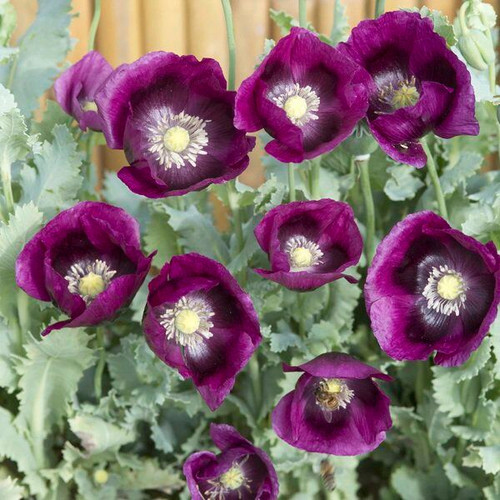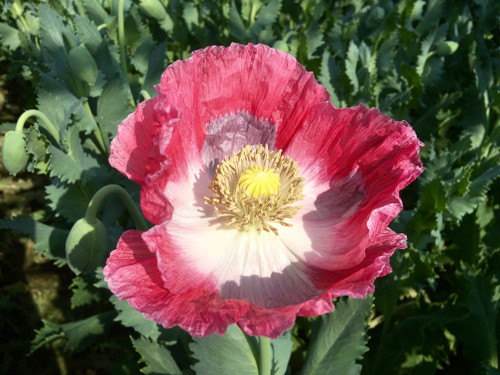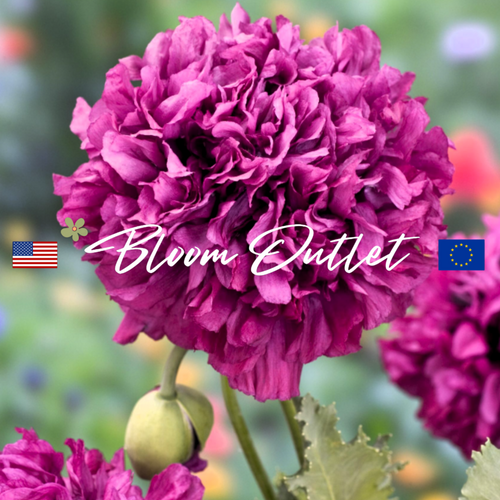Papaver commonly known as Alpine poppy, Great scarlet poppy, Arctic poppy, Iceland poppy, Long-headed poppy, Oriental poppy, Corn poppy, Field poppy, Flanders poppy, Breadseed poppy are annuals, biennials and perennials, some evergreen, occurring in a wide range of habitats, from lowlands to high mountains; most are from C. and S. Europe and temperate Asia, a few from S. Africa, Australia, W. North America, and subarctic regions. The stems are usually wiry, unbranched and exude latex if damaged. Foliage is gray-green or light to dark green. The flowers are paper or peony-like, wide spreading, bowl, cup or saucer-shaped, usually with 4 petals and brightly colored, sometimes with marks or spots followed by distinctive seed pods. Fully hardy to frost hardy. The many small seeds escape from pores beneath the disk when the capsule is shaken by the wind. Self seeds readily.
USES: Mixed or herbaceous border, Rock gardens, Annual border, Mass plantings, Wildflower gardens, Landscaping, Pollinator gardens, Prairie gardens, Mixed Containers, Walkways, Seed pods for dried flower arrangements
Botanical Name: Papaver somniferum
Common Name: Breadseed Poppy, Common Poppy, Schlafmohn
Type: Erect Annual
Flower Color: A much sought after poppy for it's extraordinary plum purple colored flowers with deep purple spots up to 4 in. (10cm) across followed by blue-green seed pods
Foliage Color: Grayish-green leaves to 5 in. (13cm) or longer
Flowering Time: July to September
Plant Height: 3 ft. (90cm)
Plant Width: up to 12 in. (30cm)
Light Requirements: Full sun
Water Requirements: Moderate
Soil Requirements: Well drained, deep, fertile soil
USDA Zone: 3-8
AHS Heat Zone: 8-1
Sowing Instructions (Cliff Notes Version): Sow seeds on site in cooler climates in spring and sow in the fall in warmer zones (they don’t transplant well). Don’t cover the seeds. Barely press into the ground as they need light to germinate. Plants have very slow development in the beginning of their vegetation period. Because of this, competition of weeds is very high in early stages so it’s very important to control weeds effectively in the first 50 days after sowing.
Click here for Planting Instructions









